SOS: Songs of Solomon: A Queer Translation
 SOS: Songs of Solomon: A Queer Translation
SOS: Songs of Solomon: A Queer Translation
by j/j hastain
Spuyten Duyvil Press, 2013
208 pages (photography and text) / $40 Buy from Spuyten Duyvil or Amazon
How to speak of j/j hastain’s SOS: Songs of Solomon: A Queer Translation? There will inevitably be as many experiences of SOS as there are readers of it. Perhaps, for some of us who decide to fully enter the dimensions and matrices of SOS, witness will end up being a more proper term than reader. As a reader/witness, it is hard to come away from this physical object—a thick, hybrid intersection of photography and fierce poetic meditations about loves, genders, sexualities, spirits—without having felt invited to project oneself into it. In addition to a book, SOS is a hand, potentially open, filled with secrets about bodies and beloveds. If you allow yourself to be love-filled and tender as you hold your hands open in return, from the other side of the book/body, you could receive a secret. “All this love in order to be part of the incarnate, sentient language wherein grief and fulfillment no longer need to be at odds with each other.”
hastain summons witnesses with the second person tense throughout: “Perhaps intimacies within a book obsessed with the beloved can lead you to your beloved in form? Would you be forlorn during each of the necessary translations?” Translation from book to body. From body to beloved. The beckon of the beloved as friend, lover, self, secret, reader; beloved as witness; beloved as an act of shamanistic return. “It makes you beloved to me that you can hear my interior echoes.”
I’m just one of the reader-witnesses of SOS, and there’s no way of knowing what manifestations of SOS I haven’t accessed but that you, or you, or you might discover and decide to navigate on your own. I find this wonderful. SOS leaves spaces in which the told and untold point to each other deliberately and with care. Many of those spaces exist between the words and the photographs that tattoo the book/body’s paper-skin. SOS is decidedly mystical, written on itself with images of disjointed body parts, dreamscapes, and various unspecified holdings. Its words and images weave ribbon-like through countless definitions and enactments of love—love as fear, as ecstasy, as spirit, as sexual practice, as ancient elements, as “gender from the ground up”. This book/body resolutely invites, sometimes implores, the “you” into the profound, open-ended environments of genders.
All these bound ribbons and their inverse liberations sing, draw out, mourn, and dance. They carry each other through countless modes: The sexual—tongues; skins; “an infinitude of virginities and coituses”. The earthly—birds; gems; sky-myrrh; “this one handful of water that I’m carrying”. The mystical and psychospiritual—“non-singular states in the spirit of confession”. No dance here can be disconnected from its Others. I experience SOS as both a home and a mystery—not a mystery to be afraid of, necessarily; a mystery that can be learned from, one that needs light here and darkness there, sometimes on its own terms and sometimes via the willingness of the “you”, of the beloved, to touch it. It is hard to escape the conclusion that the decision to be alive in this manner is a marvelous and worthwhile decision for a book to make.
***
Carolyn Zaikowski is the author of the novel A Child Is Being Killed (Aqueous Books, 2013). Her poetry, fiction, and essays have appeared in Pank, The Rumpus, Eleven Eleven Journal, Sententia, 1913: A Journal of Forms, Nebula: A Journal of Multidisciplinary Scholarship, Everyday Genius, and elsewhere. She holds an MFA in Creative Writing from Naropa University. She can be found at www.liferoar.wordpress.com.
March 31st, 2014 / 10:00 am
25 Points: Is It My Body?
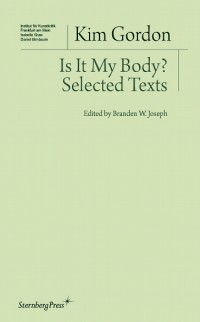 Is It My Body?
Is It My Body?
by Kim Gordon
Sternberg Press, 2014
182 pages / $18.86 buy from Amazon
1. Kim Gordon the New York City artist is one and the same with Kim Gordon, bassist of Sonic Youth.
2. Despite her claim, “I don’t think of myself as a musician,” whether they’re “on hiatus” or not, the band’s music remains the central association by which readers are likely to recognize her name.
3. I’m no diehard fan of Sonic Youth. Although I do, after a fashion, dig their music and several years ago saw them play The Crystal Ballroom in Portland, OR.
4. This is no tell-all. Sonic Youth is more an afterthought than anything here, a near excuse to remain creative—though no less central to Gordon’s life.
5. Gordon’s reasoning for taking part in Sonic Youth: “Being part of a music culture or subculture appealed to me more than staying outside and commenting on it in a work of art.”
6. This book zooms. It’s a sonically charged brain charge; a light breeze to read yet nevertheless heavily informative. Contents range from Gordon’s first published texts from the early 1980s rather seamlessly on up to a conversation she had with sometime-fellow collaborator Jutta Koether, not even a year ago.
7. Gordon skirts the edges of official art gallery/curator talk, usefully dipping into its discourses only to flaunt her independence from reliance upon them to express her thoughts. While postmodern, avant-garde, theory-driven vocabularies and accompanying ideas are occasionally floated and tussled with, they’re smoothly exited from without distracting from the natural style of her writing.
8. Gordon tells of only useful and/or interesting things, both historical and eternal.
9. “One of the appeals of seeing No Wave bands in New York early on was that it was such a strangely abstract music. It was very free and very abstract. If you didn’t have any means to enter the galleries as an artist, being in a band was a way to be expressive and be independent of the gallery system.”
10. Unedited: “How many grannies wanted to rub their faces in Elvis’s crotch and how many boys wanted to be buttfucked by Steve Albini’s guitar?”
March 27th, 2014 / 12:00 pm
Autobiography of a Corpse, by Sigizmund Krzhizhanovsky: A fifteen-point primer on certain literary avant-gardisms
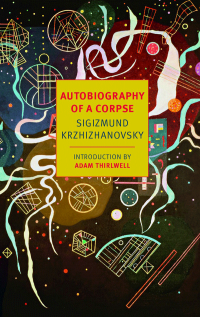 Autobiography of a Corpse
Autobiography of a Corpse
by Sigizmund Krzhizhanovsky
New York Review of Books Classics, 2013
256 pages / $15.95 buy from Amazon
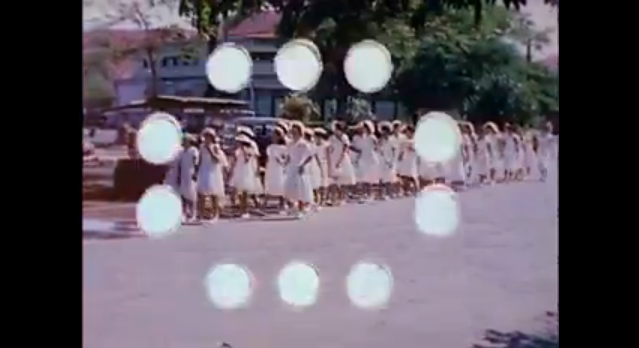
In the beginning/ the Avant-Garde/ was just a silly thing/ Coconut-colored sidewalks/ Women with blue-white parasols/ tilting over backward/ or half backward/ in the beginning/ And then it grew, and became gigantic and hard/ Like a great, great stone, the Avant-Garde/ Like a great, great, stone that had usurped all of history—Kenneth Koch, One Thousand Avant-Garde Plays
1. The history of the 20th century avant-garde is a history of anxieties. And even as manifestos gave way to splinter groups, many things remained constant. A central tenant of this history came in the compulsion against modernity and the constricting social forces of advanced industrial capitalism. Sigizmund Krzhizhanovsky wrote radical literary fantasia, and his work reflects many of the anxieties and themes that would develop across literary avant-gardes throughout the 20th century.
Born in Kiev in 1887, Sigizmund Krzhizhanovsky moved to Moscow in 1922 where he worked as a lecturer and theater critic. From this time until his death in 1950, he secretly compiled an incredible body of fantastic novels and stories. These were not published in his lifetime, and owing to the damning soviet censorship, would not be published until 1989. This collection Autobiography of a Corpse, a selection of short stories was published for the first time in 2010, and an English edition came out from NYRB Classics in the fall of 2013. The collection, provocative and expansive, offers a look at many anxieties and themes that would come to define the avant-garde.
March 20th, 2014 / 6:27 pm
Stuck in the Middle: Second Person and You
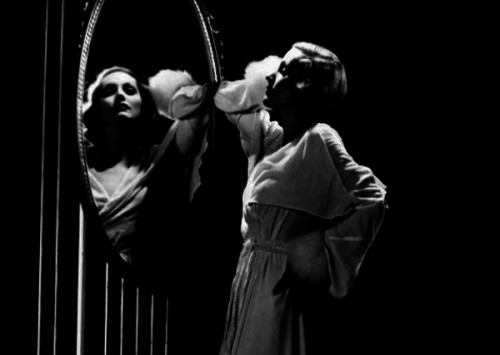
Ask ten people what they think about second person, and a good seven or eight of them will say that McInerney did it once, sure, and did it well, but outside of Bright Lights, Big City, second-person’s just a gimmick, is best left trapped in all the choose-your-own-adventure series from the eighties.
I can kind of understand this, too.
With stories, we have default settings: first- and third-person, with third really being the deviance from the norm, the deviance from first-person. First-person is our natural delivery method, isn’t it? If you’re telling somebody about the amusement park last week, you do it like: I was standing in line for like ten hours, and then this clown laughed at me and it had to be eight thousand degrees and on and on, I’ing your way into some perfect punchline of a conclusion. But you, if your name’s Jimmy, say, never go Jimmy was standing in line for ten hours, and then this clown laughed at him and it had to be like eight thousand degrees.
Note too with those examples that part of our natural mode for fiction, it’s past tense. This is because fiction is narrative, and narrative is selection, and selection is from pre-existing events, and events only pre-exist if they, you know, happened before.
It’s complicated.
25 Points: Webster’s New World English Grammar Handbook
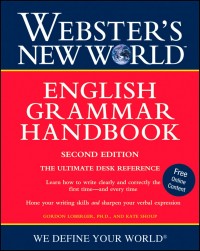 Webster’s New World English Grammar Handbook, Second Edition
Webster’s New World English Grammar Handbook, Second Edition
by Gordon Loberger and Kate Shoup
Webster’s New World, 2009
408 pages / $16.99 buy from Amazon
1. Do you guys know about all of the different types of pronouns? There are so many different types of pronouns.
2. New theory: 85% of people who claim to understand grammar actually just have three to four grammar pet peeves they won’t shut up about.
3. Should I be embarrassed that while I did know the name for the “perfect” tense, I didn’t know that the other tense was called the “progressive” tense. I should definitely be embarrassed, right?
4. And don’t even get me started on prepositions.
5. I dare you to get through the Misused Words and Expressions section without your stomach dropping in panic at least once. Don’t worry, you probably didn’t confuse “awhile” and “a while” in your MFA application packet.
6. If you think you might have confused those words in your MFA application packet, just stare at them for a long time. Pretty soon they won’t even seem like words anymore.
7. The Commonly Misspelled Words section made me want to have all of my friends over for an impromptu spelling contest. (This is maybe related to why I have so few friends.)
8. In order to really understand grammar—for it to really stick—you have to learn the names of things. This seems like a metaphor for something.
9. I can never remember anyone’s name when I meet them. Is this why I’m bad at grammar?
10. Mindy Kaling seems to think it just makes me rude: “I don’t think it should be socially acceptable for people to say they are “bad with names.” No one is bad with names. That is not a real thing. Not knowing people’s names isn’t a neurological condition; it’s a choice. You choose not to make learning people’s names a priority. It’s like saying, “Hey, a disclaimer about me: I’m rude.”
March 6th, 2014 / 4:07 pm
25 Points: Tell God I Don’t Exist
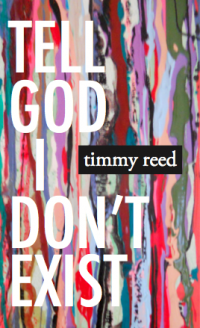 Tell God I Don’t Exist
Tell God I Don’t Exist
by Timmy Reed
Underrated Animals Press, 2013
92 pages / $12.00 buy from Underrated Animals Press
1. The album Shrines by Purity Ring is easily in my top five albums from the past five years. When I hear the lush electronic wooziness of songs like “Fineshrine” I feel like I’m being hugged—enwrapped in a surreal, dreamy blanket of sound.
2. When I read Timmy Reed’s Tell God I Don’t Exist I get a similar sensation.
3. These stories are hazy fever dreams, ecstatic jokes, deviant fairy tales.
4. When describing this collection the word twee comes to mind.
5. Twee is so often taken as derogatory, but this collection is saccharine sweet in a good way.
6. There’s a lot of handholding in these stories.
7. There’s a lot of candy, too:
“We eat licorice shoelaces and wayward mosquitoes, but we mostly eat sweets. We scarf cannolis. We munch crullers. We visit the snowball stand in bare feet and sleep next to pitchers of lemonade. We grow fat on melancholy pastries. We sweat sugar in the sun. We speak, through a saccharine haze, of taking vitamins. We speak in the past tense of the future as if it were part of a childhood dream.”
8. I found this inside my copy of the book:
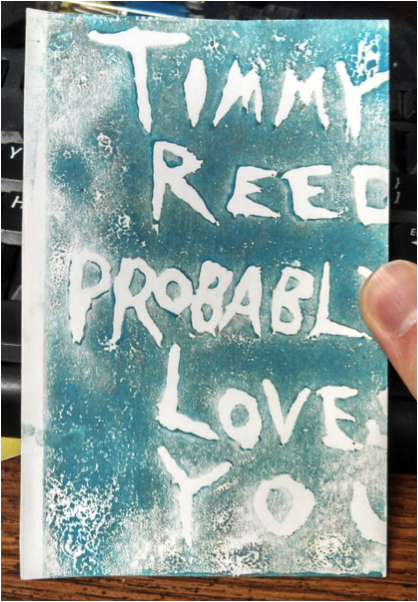
9. I really hope everyone’s copy comes with a print that tells them that Timmy Reed (in all likelihood) loves them, because it’s true.
March 4th, 2014 / 3:09 pm
25 Points: TheNewerYork
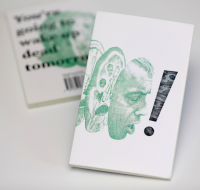 The Weekender 3-Pack
The Weekender 3-Pack
by TheNewerYork
240 pages / $22.00 buy from TheNewerYork
1. There is a market (and when I say this I mean like, a common, growing… need, among readers) for very brief literature. This is not news for the twitter generation, the HTMLGIANT community, or internet writers. But, it bears repeating. We need things smaller.
2. As much as we need things short, we also need them to be deep. No!–we need some of it deep. We also need some of it funny and purejoy. We need some of it confusing. We need unsettling. We need beautiful, and we need deep.
3. TheNewerYork pours these parts (mostly equally) into the 70-some pages of each of their three journals (Book 0, Book 2, and Book 3–Book 4 is forthcoming this year). It’s this wildly interesting, thoughtful, colorful, ugly, pretty, stupid, weird. It’s equal parts smile-inducing and vomit-inducing. And no single piece of experimental fiction in these collections goes over two pages in length.
4. When it comes to literature, TNY is like those bags full of halloween-sized candies. You want two or three at a time, you reach in, and take what you get. Some skittles, some m&ms, some fucking Almond Joy (ugh!), and every once and awhile a severed finger, a used condom, a sticky note with the answer to life written on it.
5. Aside from length and diversity, these pieces share at their fundamental bottom new forms of storytelling. David Foster Wallace solidified for us how fragmented culture/life/reality/consciousness is thanks to…well everything that constitutes society and its structures. Now our writers are taking up these little fragments and painting pictures of them, one at a time. Or, they are picking up a fragment (picture a shard of glass AS A SYMBOL for some little fragment or waste of society) and painting not it, but with it. With the colors the fragment contains. These pieces of literature are some of them the canvas and some of them the tool, the brush, the color, the pen.
6. Okay enough bullshit. These issues are fantastic. They entertain me very much. They make it fun to read.
7. These are perfect for reading on a lunch break, or during a 15 minute break in the middle morning or late afternoon. Like, I have trouble bringing novels with me places and really getting into them during short, unpredictable moments throughout the day. Like, for me, the novel I read in bed each night is not something I’m taking with me in the bathroom, or to work, or on the train. I have found that these short pieces are so concisely packed with thought and contemporaryness (?) that they’re as entertaining, emotional, and thought-provoking as anything I could be doing with a spare 6 minutes. That’s right, I said it. Thought-provoking.
8. With that said, I did read all of issue 2 (in 3 chunks) while in the passenger seat of my girlfriend’s car on a 5 hour drive home after Christmas.
9. And, it’s the only ‘book’ I’ve been able to read in a car, without puking or even wanting to.
10. And, I’ve picked up that same issue six times since Christmas, flipping open to a random spot and reliving some freaky or funny tale which, as I re-read, I can feel becoming as real an artistic comfort to me as a Books album, or Season 9 of Seinfeld. READ MORE >
February 18th, 2014 / 6:33 pm
8 Ways to Make Book Readings Awesome

Honestly, I love books more than money, sex, or bourbon. But book readings are often a pretty lame way to spend an evening. They’re pompous, silly, poorly planned, and excruciatingly dull. They accomplish nothing. And the majority of people who come to book readings have already read the book so it’s not even like they’re good marketing ploys.
Reader-friends, it doesn’t have to be this way! Books are awesome, most authors are engaging, intelligent people, and bookstores are certainly the fun places we all love. Therefore, let’s bring our noggins together and think up a bunch of ways to turn these indomitably boring events into lively festivals of literary hoopla and excitement. Let me start us off with 8 suggestions:
#1. No introductions – This will cut down the pomp by a solid 50%. No blathering adulations or list of prizes. Just say the author’s name, a book title or two, and get the show on the road.
#2. Don’t let the author sit down – Get kinetic, Orhan Pamuk! Let’s move it, Lydia Davis! Shake that money-maker a tad Marilynn Robinson! Give us some energy and zest. Do a little hula and shimmy shimmy. No chair, no podium, no hammock or beanbag contraption to rest your writerly body on. Instead move around and hell, if the energy sags, do what the jazz musicians do and improvise a sentence or two.
#3. Shout “BAM” before turning each page – “The instant her voice broke off, ceasing to compel my attention, my belief, I felt the basic insincerity of what she—BAM!!!—had said. It made me uneasy, as though the whole evening had been a trick of some sort to exact a contributory emotion from me.” That’s right, read it, Fitzgerald!
#5. Gesticulate rabidly, do 10 minutes of reading max, and if the reading gets boring accept the occasional heckle – “Hey Cheever, you suck tattersal cock!”
#6. End by telling us a local anecdote, good bookstore memory, or about your literary arch-nemesis – This will help personalize the event. A little showmanship goes a long way in creating a compelling public experience.
#7. Don’t let that person in the audience ask questions – This is BY FAR the most important suggestion because you know EXACTLY who I mean. We can’t let this person hijack the show. Have courage, bookstore employees! Even if the question-asker is a regular who always buys hardcover, tell them the gag order’s in effect for the common good of everyone else. We thank you greatly.
#8. Serve booze or juice and light snacks afterward – It’s why people love art events, the free wine and Triscuits. Somebody could take a dump on the floor of his sublet and so long as there was two-buck chuck, Cheese Nips, and a trendy promotional flyer loads of people would come to view it. Food equals turn out. Turn out equals energy and press. Also, free Ritz crackers and tiny paper cups of wine will get people to stick around and probably buy the author’s journeyman collection of short stories.
Now these suggestions are just Part 1. Part 2 involves more excitement and maybe violence. We need to take dramatic steps to invigorate today’s literary players so they’ll create engaging personae, which will outlive them. We need a new flock of writers to replace the likes of Norman Mailer, Lillian Hellman, Gore Vidal, and Hunter S. Thompson.
At AWP this year, the coordinators should host off-site events to keep everybody on their toes. Perhaps a charity boxing match between Colson Whitehead and Richard Ford. Or a street rumble between people who like prose poems and the rest of the world. Somebody can take a folding chair to Gary Shteyngart’s face WWF style. I’d pay money to see that. Violence and fiendishness are, weirdly enough, sometimes useful shortcuts to developing literary personae. Let’s make this thing memorable. BAM!!
***
Alex Kalamaroff is a 26-year-old writer living in Boston. He works on the administrative team of a Boston Public Schools high school. You can read his other writings here or follow him on twitter @alexkalamaroff.
25 Points: Big Sur
 Big Sur
Big Sur
by Jack Kerouac
Penguin Ink, 2011
224 pages / $12.84 buy from Amazon
1. The movie, based on Jack Kerouac’s book, based on Big Sur, 36.1075 °N, 121.6258 °W.
2. Voiceover beginning to end, front to back.
3. I think of all the times I’ve been to Frisco, ages 5, 6, 7, 9, 9, 9, 11, 20, 21, 22, 23, 24 and 28. I think of City Lights, North Beach, Sea Otters, Strip Clubs, Merry-Go-Rounds, Mirrored Ceilings, Fake IDs, Suspension Bridges, Soccer, Coffee and Bread.
4. Boredom. On my fifth birthday there were too many children and too many presents. In the backyard my father starred in Oscar the Grouch’s Cooking Show. He juggled raw eggs and ate tuna fish/jellybean/sauerkraut sandwiches. There were words the whole time but nobody talked.
5. Iodine blast. Iodine: A novel by Haven Kimmel from a song by Leonard Cohen from iodine, I, atomic number 53. From my mother’s skin before I was my mother’s.
6. Big Sur: A descent into madness, a portrait of hell, a catalogue of imperfections.
7. When I read the intimate details of our lives out loud it hurts less.
8. Things included but not mentioned in this essay: words, cigarettes, stars, beer, wine, whiskey, sand, waves, women, rhymes, slow motion, flames, bottles, trees, water, haze.
9. City Lights is my second favorite bookstore in America. Anthony Edwards as Lawrence Ferlinghetti. Anthony Edwards as Dr. Mark Greene in ER, the longest running primetime medical drama until it wasn’t. Dr. Mark Greene eating a Chicago Hot Dog over the Chicago River on a break from Chicago’s Cook County General Hospital. When I eat a Chicago Hot Dog over the Chicago River I think of Sandra Bullock, not Lawrence Ferlinghetti. I never liked ketchup.
10. FACT: Second movie I’ve seen in two weeks about the beats. Third movie on Jack I’ve seen in five years. READ MORE >
February 6th, 2014 / 4:45 pm
25 Points: Blitzkrieg
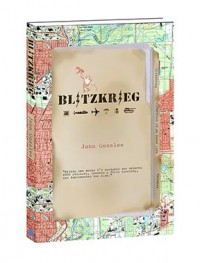 Blitzkrieg
Blitzkrieg
by John Gosslee
Rain Mountain Press, 2013
60 pages / $15.00 buy from Rain Mountain Press
1. Split-screen madness
2. Piano-playing, the keys turned to pills
3. A kiss on a grimy elevator floor
4. The interior of the exterior of a shut door
5. An angel with her arms torn off
6. Rejection, acceptance, rejection
7. Illustrations by Yumi Sakugawa, trees in a forest, pachyderms inside the breadth of a bird’s chest
8. Flashmobs, tornados, claws and urninals
9. An all-out assault on the status quo
10. A baker’s dozen of streets and silence mingled with the rattle of dead claws on stony ground READ MORE >
January 28th, 2014 / 3:12 pm
